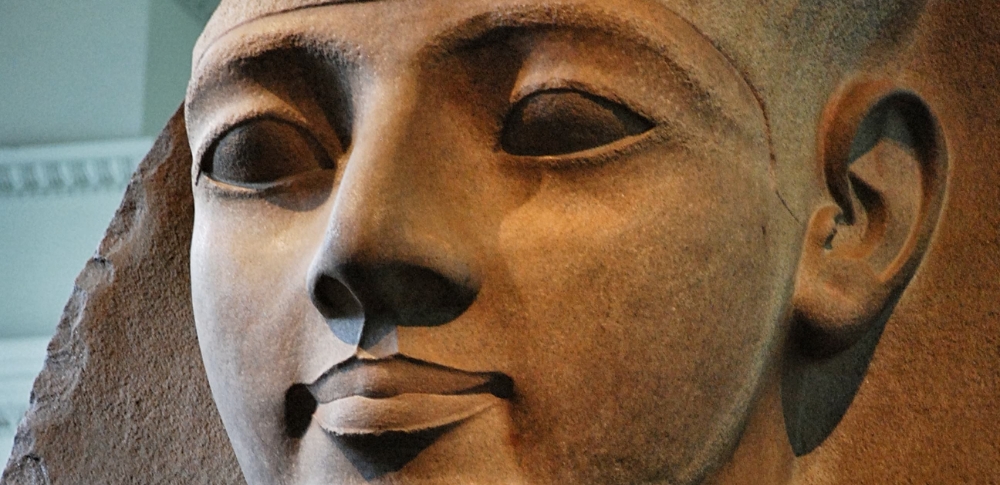Pharaoh Ramses II
Today on African Narrative Network (ANN), we visit Egypt, where the mighty Nile winds through the desert like an eternal ribbon, to explore the life of a king whose legacy still echoes across millennia—Pharaoh Ramses II, often called “Ramses the Great.” His reign, from 1279 to 1213 BC, spanned an extraordinary 66 years, making him not only one of Egypt’s longest-serving pharaohs but also one of its most powerful and influential.
A King Destined for Glory
Born into the 19th Dynasty, Pharaoh Ramses II ascended the throne at the age of 24, following in the footsteps of his father, Seti I, who had already begun restoring Egypt’s greatness. But Ramses had ambitions that would surpass even his father’s accomplishments. From the very beginning, he envisioned a legacy so vast that it would be immortalized not just in the annals of history, but in the stone and sand of Egypt itself.
Pharaoh Ramses II The Warrior Pharaoh
Pharaoh Ramses II’s reign began with a fierce determination to expand and protect his empire. He led military campaigns far and wide, from the deserts of Nubia in the south to the fertile lands of the Levant in the north. His most famous military engagement, the Battle of Kadesh against the Hittites, would go down in history not only for its scale but also for its political significance.
Although the battle itself ended in a tactical stalemate, Ramses II declared it a triumph. In fact, this “victory” was so important to his image that he had it immortalized in stone on the walls of temples across Egypt. His masterful use of propaganda reinforced his reputation as a great warrior king, further cementing his status as Egypt’s protector and conqueror.
Yet, what truly made Ramses a remarkable leader was not just his ability to wage war, but his diplomatic acumen. The famous Egyptian-Hittite peace treaty, often considered the world’s first recorded peace accord, was signed during his reign—marking a turning point in Egypt’s international relations.
The Builder King
Beyond his prowess on the battlefield, Pharaoh Ramses II was a visionary builder. He oversaw the construction of more temples, statues, and monuments than any other pharaoh in Egyptian history. His projects were as monumental as his ambition, and they remain some of Egypt’s most iconic landmarks to this day.
The temples at Abu Simbel, perhaps his greatest architectural achievement, stand as a testament to his reign. Carved directly into the cliffs overlooking the Nile, these towering statues of Pharaoh Ramses II himself stand guard, gazing out over the land he ruled. The sheer scale of Abu Simbel is breathtaking—a visual statement of the pharaoh’s power and divine status.
The Ramesseum, his mortuary temple in Thebes, was another grand project. This sprawling complex was filled with statues, inscriptions, and carvings glorifying the life of Ramses. Though much of it now lies in ruins, the grandeur and ambition of the temple remain palpable, offering a glimpse into the mind of a ruler who wanted to be remembered for eternity.
Ramses II’s contributions to the city of Luxor, particularly his additions to the Temple of Karnak, also leave a lasting imprint on Egypt’s cultural landscape. He added vast courtyards, towering obelisks, and magnificent statues, all designed to awe and inspire those who came to worship.
The Divine King
In ancient Egypt, the pharaoh was not just a king but a god. Ramses II took this divine status seriously, emphasizing his connection to the gods in both life and death. Many of his statues depict him seated beside gods such as Amun-Ra, the king of the Egyptian pantheon.Pharaoh Ramses II presented himself as their equal, reinforcing the idea that his rule was sanctioned by divine forces.
One of the most striking examples of this divine association is found in the Colossi of Memnon, massive statues of Ramses that once flanked the entrance to his mortuary temple. These statues were not merely political propaganda; they were designed to convey his godlike stature and eternal power. Even in death, Ramses sought to transcend mortality, ensuring that his legacy would endure as long as the Nile itself.
Ramses the Family Man
Despite his divine persona, Pharaoh Ramses II was also a family man. He is believed to have fathered over 100 children with his many wives and concubines. His favorite wife, Queen Nefertari, was not only his beloved companion but also a powerful figure in her own right. Ramses had a magnificent tomb built for her in the Valley of the Queens, adorned with beautiful murals and inscriptions that extol her beauty and wisdom. His devotion to Nefertari is one of the most poignant aspects of his legacy—a reminder that even the most powerful of kings had a personal, human side.
The Legacy of Ramses II
After ruling for 66 years—longer than most ancient Egyptians lived—Pharaoh Ramses II died at the age of 90, leaving behind a kingdom stronger than when he had inherited it. He was buried in the Valley of the Kings, where his mummified remains were discovered in 1881, more than 3,000 years after his death. Even in death, his body was treated as a relic of divine power, his life continuing to influence not only Egypt but the wider ancient world.
To this day, Pharaoh Ramses II is remembered not just as a pharaoh, but as a legend. His military conquests, diplomatic triumphs, and architectural wonders have ensured that his name is etched into history. His reign symbolizes the height of ancient Egypt’s power and prestige. Through his colossal monuments and immortal legacy, Ramses the Great achieved what he set out to do—he became eternal.
As we walk through the temples and tombs of Egypt today, it’s hard not to feel the presence of Ramses II—his towering statues gazing down, reminding us that even in the vast expanse of time, his legacy still reigns supreme.

